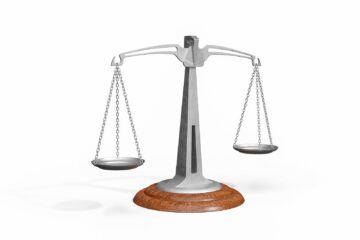![]()
- Introduction:
- The Doctrine of Separation of Power
- The Doctrine of Checks and Balances
- Separation of Power in India
- Practical Applicability of The Doctrine in India
- Separation of Personnel
- The Doctrine of Checks and Balances: Indian View
- Separation of Powers in The Constitution of USA
- Delegated Legislation
- The Doctrine of Checks and Balances: USA View
- Conclusion
Introduction:
When it comes down to it, constitutions in constitutional democracies like India and the United States might be seen as a power-limiting document. I think it’s important to keep an eye on the government to prevent the country from becoming dictatorial. To a constitutionalist, the people have the ultimate sovereign authority; government exercises this power on behalf of them. With the separation of powers between the three basic tasks of government (making laws, implementing laws, interpreting laws), this spirit of constitutionalism may be maintained.
The Doctrine of Separation of Power
Since antiquity, the notion of separation of powers has been in the spotlight. The Greek philosopher Aristotle and the English philosopher John Locke both described an ideal society where authority was separated. It was Sir Montesquieu, in his book “The Spirit of Laws,” who elucidated the actual meaning of the concept. That’s because the three aspects of governance mentioned in this article are maintained distinct under the theory of separation of powers. On a closer look, the doctrine may be understood as having two key principles, without which it would be difficult to understand the doctrine’s core. At the outset, the functions should be performed by departments that are completely independent of one another. It should be avoided that the same employee is employed by more than one department, and vice versa.
To sustain the spirit of constitutionalism, the division of powers should be strictly adhered to and should not be compromised at any cost. As a result, contemporary democracies require a certain amount of overlap across the three ministries. Checks and balances come into play as a result.
The Doctrine of Checks and Balances
That way, one department won’t be dictatorial and disorderly, since if that happens, the government’s equilibrium would be thrown off, resulting in a long-term catastrophe. According to the idea, each government agency must be scrutinized while maintaining its independence.
Even though various departments in the government execute distinct duties, the idea of checks and balances is based on the premise that each department’s primary goal is the country’s well-being and governance. It is also vital that departments work together to establish effective governance, rather than working in isolation.
Separation of powers is said to operate best when combined with this idea, as both may ensure that authority is not concentrated in one department. The tyrannical and arbitrary system of government may be eradicated from the roots if each department works together and takes care in its decision-making. For this reason, many major constitution-based democracies adhere to a similar approach.
Separation of Power in India
In the case of Bandhuva Mukti Morcha v. Union of India [AIR 1984 SC 802], it was decided that while the Indian Constitution does not expressly provide for the separation of powers for all ministries, it may be inferred from the constitution’s basic construction. In the case of Kesavananda Bharati versus State of Kerala, AIR 1973 SC 1461, it was also enunciated as a basic structure.
According to Article 50 of the Indian Constitution, the government and judiciary are separated from each other. In this clause, however, there is no reference to the constitutional law respecting the separation of powers and responsibilities of the legislative.
According to Article 79 of the Constitution, the legislative authority rests in both the Houses of Parliament and the State Legislative Bodies. Article 53 delegated executive authority to the president, while Article 154 delegated it to governors at various state levels, while the Supreme Court of India, various High Courts, and also inferior courts were delegated judicial power.
When it comes to some functions of the executive, Ram Jawaya v. the State of Punjab, AIR 1955 SC 549, concluded that it might be interpreted as a component of the legislative and is answerable to it. According to the Prime Minister’s position, the President is merely a nominal leader.
Practical Applicability of The Doctrine in India
As a practical matter, India’s constitution implies that separation of powers doesn’t have to be strictly adhered to for it to work. According to Ram Jawaya Kapur v. the State of Punjab, AIR 1955 SC 549, the only acceptable concept under the Indian Constitution is that of the separation of essential duties of the departments within a state or territory The tasks and membership of the three organs frequently overlap.
If the theory of separation of powers is strictly interpreted, the Parliament also performs some judicial responsibilities. To be clear, the Constitution of India lays forth these judicial responsibilities to be carried out by the legislative branch. Article 61 of the Constitution provides for the legislature to function as a judicial body in certain circumstances, including the impeachment of the president.
”To impeach a president for violating the Constitution, any house of parliament may bring the allegation”.
In the case of Indira Nehru Gandhi v. Raj Narain 1975 AIR 1590, it was decided that the legislature must meet two key requirements to execute judicial responsibilities. This authority should be specifically granted to parliament, and it must be exercised following the legal procedure during discharge of its duties to impeach a president for violating the Constitution, any house of parliament may bring the allegation.
In the case of Indira Nehru Gandhi v. Raj Narain 1975 AIR 1590, it was decided that the legislature must meet two key requirements to execute judicial responsibilities. This authority should be specifically granted to parliament, and it must be exercised following the legal procedure during the discharge of its duties.
Though a distinct division between the executive and judiciary has been established, a careful reading of the Indian Constitution makes it obvious that in some specific situations, the president can undertake both legislative and judicial tasks and responsibilities. In terms of legislative authority, the Indian Constitution specifically grants this power to the president in Article 123 and the Governor in Article 213, according to the Constitution. When the parliament is in recess, the executive can use this power to create legislation.
Legislative powers can be assigned to the executive through delegated legislation. In Delhi Laws Act, 1912, re 1951 SCR 747, it was ruled that because the Constitution explicitly allowed for the legislative procedure and committed it to the parliament, the framers had given confidence to the legislative department that the lawmaking duty would be carried out only by them. Only important legislative responsibilities, however, can be outsourced. Legislators can also delegate auxiliary law-making duties. Executive tribunals and quasi-judiciary organizations have long been recognized for their judicial responsibilities.
When it comes to legislative and executive authorities, there is a certain amount of overlap that is taken by the courts. India’s Supreme Court has the power to adopt laws and decrees to ensure comprehensive justice for the people, although the legislative and executive departments have primary duty for this, according to Indian Constitution articles 141 and 142.
Separation of Personnel
There should be no overlap between the departments, and the same individual should not be in more than one department, as has already been mentioned. According to the Constitution, there must be some degree of overlap in the operation of government agencies in India. In India, the concept of separation of powers is broken by the president of India, who is both a legislator and an executive.
The Doctrine of Checks and Balances: Indian View
India has accepted the philosophy, and all ministries work together to ensure the smooth running of the country’s administration. It is one of the most important tools for performing checks and balances. This means that the Supreme Court of India can evaluate laws to ensure that they comply with the basic rights outlined in Articles 32 and 136. According to the Supreme Court, legislators can only pass legislation if they don’t infringe on essential constitutional principles. In addition, the higher courts can review the quasi-judicial activities of tribunals. As you can see, the court is keeping an eye on the other branches of government in all of these situations.
To guarantee that the court does not act arbitrarily, the Indian constitution ensures that the judiciary is subject to sufficient checks and balances. When it comes to appointing judges, the administration has a say. The judiciary, on the other hand, must be kept in check so that it does not become a puppet in the hands of the other departments. As a result, the government cannot nominate judges without consulting the collegium of judges. The consolidated fund of India also pays the judges’ salaries and pensions. Although India’s President is considered to be the formal head of state, he must follow the recommendation of the legislature’s council of ministers.
Separation of Powers in The Constitution of USA
The United States of America adheres to a strict separation of powers concept in theory, but in practice, the idea is combined with the notion of checks and balances to achieve effective and efficient administration.
The United States Constitution specifies three government departments and the tasks that each of these departments performs. Under Article I of the Constitution, which stipulates that Congress has all legislative powers in the country, Congress has all legislative power. Similar to Article II’s governmental powers, Article III’s judicial authorities are divided between the Supreme Court and the lower courts.
Delegated Legislation
Many believe delegated legislation to be defective because they undercut the spirit of the separation of powers in their implementation. Delegated legislation would generate functional overlap, which would violate the separation of powers.
United States Constitution implements separation of powers a little more severely than the Indian Constitution. Legislative rule-making authority can’t be delegated, thus, in theory, by the legislature to other departments or constituencies. Many times, however, the legislature has delegated its rulemaking authority and the highest court has upheld such regulations.
The Doctrine of Checks and Balances: USA View
However, although separation of powers theory is inherent in its political philosophy and the reason for its formation, the rule of checks and balances is such an integral part of its construction, that it cannot be separated from the constitution.
In this way, the constitution clearly outlines the checks and balances between departments. When the President exercises his veto authority to legislate he keeps Congress’s legislative power under check. In addition, he has the power to convene a meeting of Congress. A similar clause to that found in India’s constitution, judicial review, holds Congress in check by allowing the supreme court to declare any bill illegal and therefore null.
It is widely believed that in America, the president is regarded as the true leader of the executive branch of government. In addition, the president has a set term that can only be ended by a rigorous impeachment procedure. So, unlike India, where the president must answer to Congress, he does not have to take into account choices made by his deputy. However, this should not be interpreted to indicate that the president has total authority and that the other departments have no way to check him. If the president’s rules violate the constitution, the Supreme Court can declare them unenforceable. As part of its oversight of the executive, Congress decides how much money the executive’s employees will get and sets regulations for the executive’s operation. As a result, Congress cannot impose arbitrary and irrational restrictions on the executive branch or its operations. But the court can find any law passed or decreed by Congress or the administration to be unconstitutional, limiting the power of the legislature and the executive.
This agency is subject to some checks and balances even though judicial independence is maintained. Court rulings are infringed upon by Congress in line with the constitution According to Article III Section 2 of the US Constitution, “with such Exceptions, and under such rules, as the Congress shall prescribe.[1]” As per Article III Section 1, Congress also can create subordinate courts and designate their jurisdiction. [2]
Conclusion
It is clear from a comparison of the respective constitutions of India and the United States that while both nations do not allow for an absolute and rigorous separation of powers, the US Constitution’s separation of powers is theoretically tighter than India’s.
Separate power in all departments is implicit in both nations’ constitutions, although they do not expressly state it.
Between the two nations, a significant divergence emerges in terms of how the ideology is implemented. In the United States, the administration has less power over the legislative and vice versa than it does in India. A presidential form of government exists in the United States, where the president can be considered a real executive head. Thus, in principle, the president is free to behave as he pleases and is not answerable to the legislature as long as he stays within the constitutional bounds of the office. However, the Supreme Court can examine the president’s actions. This independence extends even to Congress, which cannot dissolve a governing congress.
Regarding the Indian context and the legislative’s influence over executive power, a difference must be noted. Only in India may the president be referred to as the nominal head of the state. To make decisions, the president relies on input and advice from the council of ministers, which is a component of the legislative branch. A parliament can also be dissolved by the prime minister, who may be interpreted as the genuine head.
It’s also worth noting that there’s a constitutional guarantee of total separation of people across agencies in the United States, but in Canada, it’s not. The Indian Constitution, on the other hand, does not provide for such a division. Also, in India, there is a certain amount of overlap between the legislative and executive branches of government.
The fact that the philosophy in India and the United States is still fundamentally similar should be noted, but some important distinctions should not be disregarded. Much criticism is leveled at the two countries’ respective legal frameworks. The fact remains, however, that both countries have chosen the wisest course of action given the social and historical circumstances in which they found themselves.
[1] https://blog.ipleaders.in/comparative-study-separation-power-india-usa/
[2] https://www.ijlmh.com/wp-content/uploads/2019/03/Judicial-Review-A-Comparative-Analysis-of-India-USA-UK.pdf



0 Comments